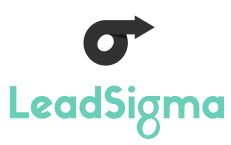Defining Buyer Personas
Once we have defined the exact value of our offering(s), we should next consider the nature of our target buyers. If we do not consider the nature of our target buyers, we will likely increase sales friction.
We should always create processes and messaging to make sales easier, not harder. This starts with an acute understanding of target buyers’ pain and how they make purchasing decisions. Without considering the nature of target buyers, we dilute the effectiveness of marketing spend by blanketing broad messaging to a diverse range of buyers and praying that someone takes notice. We call this failing method the “spray and pray approach”. It doesn’t work.
Relying on “spray and pray” marketing wastes marketing resources by chasing diverse buyers who are unlikely to convert as opposed to focusing our message to a smaller, more defined subset of potential buyers who acutely experience the pain we are solving. If you want to immediately increase your marketing ROI, start by gaining a radically specific understanding of your target buyer.
Because all businesses have limited resources to attract the attention of buyers, we should focus on maximizing the effectiveness of our marketing spend. To refine our understanding of our target buyer, we must define who they are, where they are, what they care about, and how they make purchasing decisions.
Who are your target buyers?
-
Demographic characteristics
-
Age
-
Gender
-
Marital status
-
Education
-
Financial status
-
Geography
-
Professional title
These seemingly detailed characteristics help develop a clear understanding of our most likely buyers. For instance, if we were selling lawn care services, we would likely be targeting male buyers because males typically care more about the status of their lawn. We might consider targeting male homeowners with a working spouse that are 30+ years old who earn $80k+ annually because they are more likely to be able to afford outsourced lawn care and lack the time to care for their lawn.
By increasing our detailed demographic understanding of our target buyer, we are more likely to market to the people most likely to buy our service.
Where do target buyers spend their time and how do they behave?
-
What digital platforms do they use?
-
Where do they spend time?
-
What are their recreational activities?
-
Are they problem solving (goal oriented) or aspirational?
What/who influences target buyers?
-
What publications do they read?
-
What are influential figures in their life?
-
What podcasts do they listen to?
-
What forums/websites do they visit?
-
To whom, specifically, do they turn for advice?
What are target buyers’ objectives and goals?
-
What do they ultimately care about?
-
What are they aspiring to achieve?
When do they make purchasing decisions?
-
Is there cyclicality in their behavior?
-
When do they feel the pain that your service solves?
-
What immediately precedes their potential interest in your service?




